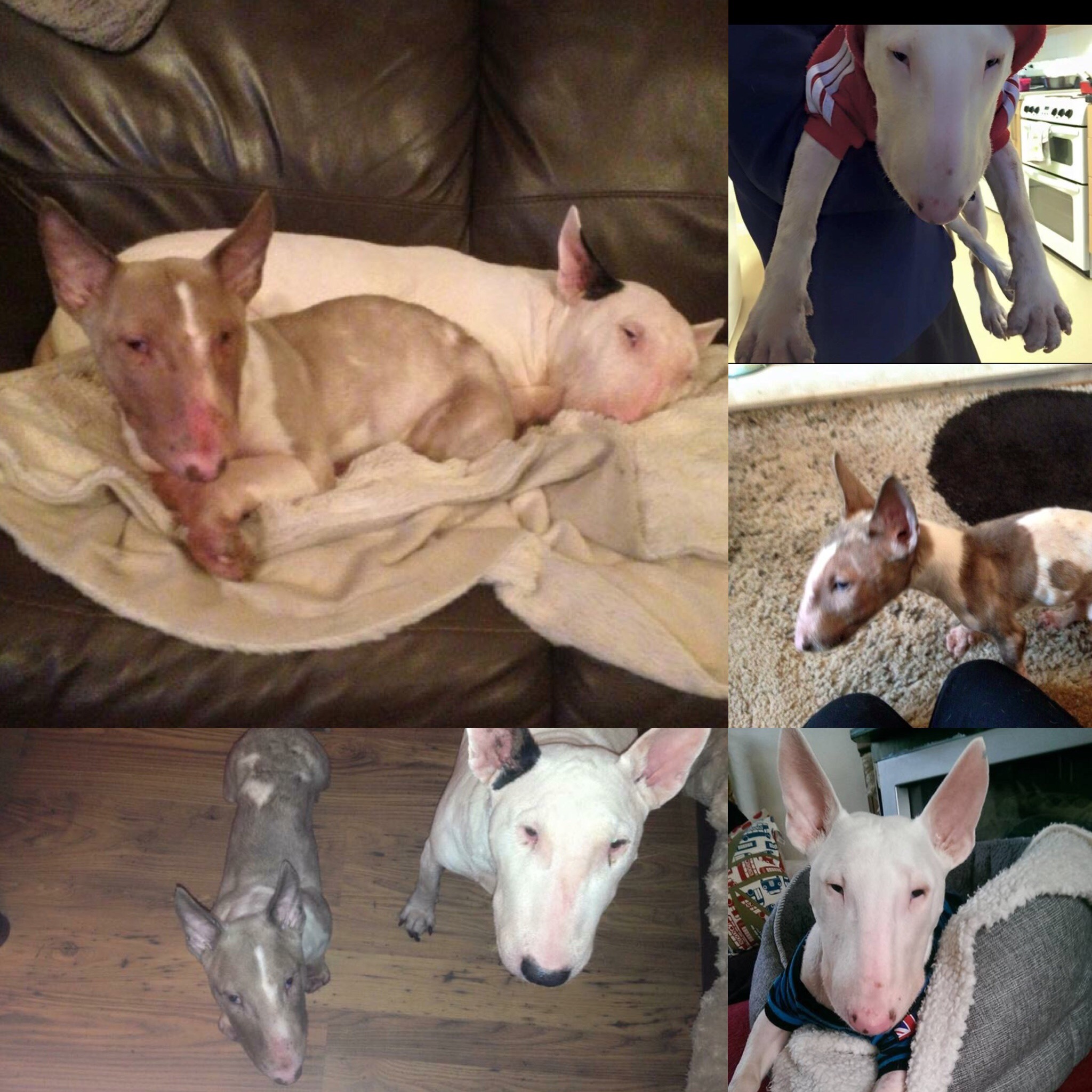Zincies
 What is a Zincie? Here is some information on Zincie dogs you might have heard, their treatment and some that are in their forever homes.
What is a Zincie? Here is some information on Zincie dogs you might have heard, their treatment and some that are in their forever homes.
Apart from being a cute little bull terrier with a huge personality there are many aspects to consider when bringing one of these angels into your home.
Lethal Acrodermatitis (LAD) is a rare breed-specific genetic disease of bull terriers. Clinical signs usually present in puppies, with growth retardation, acrodermatitis, purulent dermatitis and paronychia. Affected pups can also exhibit abnormal behaviour and diarrhoea, though not all of these symptoms are present in all afflicted pups.
Skin lesions begin as areas of moderate hyperkeratosis and progress to severe hyperkeratosis with secondary bacterial and Malassezia spp yeast infections. The rostral dorsal muzzle, lips and periocular areas had thick adherent scale with brown yellow crusts.
Juliet Shaw developed a medication plan after keeping her own LAD puppies and developing relationships with other owners globally. Juliet is happy to share her knowledge and has helped our rescue to save several LAD puppies and assisted with getting them into loving homes.
The medication costs are not cheap and can cost up to £100.00 per month.
The rescue holds walks, auctions and fun days to help bring in funds which go towards the treatment of these and other dogs in our care.
From the 15th of January 2018, a DNA test for Lethal Acrodermatitis in Bull Terriers and Miniature Bull Terriers. The test can be purchased from the Animal Health Trust via https://www.ahtdnatesting.co.uk/
Below is some useful information taken from the Animal Health Trust Website
How is the disease inherited?
The Lethal Acrodermatitis mutation is recessive; this means that a dog must inherit 2 copies of the mutation, one from each parent, to be clinically affected by Lethal Acrodermatitis. Individuals with one copy of the defective gene and one copy of the normal gene, called carriers, show no signs of disease but can pass the defective gene onto their offspring.
It is only possible to identify carriers with DNA testing.
When two carriers are crossed, 25% (on average) of the offspring will be affected by the disease, 25% will be clear and the remaining 50% will themselves be carriers.
Breeders using the DNA test will be sent results identifying their dog as belonging to one of three categories. In all cases the terms ‘normal’ and ‘mutation’ refer to the position in the DNA where this Lethal Acrodermatitis mutation is located in the Bull Terrier and Miniature Bull Terrier; it is not possible to learn anything about any other region of DNA from this test.
What does the DNA test tell me?
The DNA test for Lethal Acrodermatitis identifies if your dog is clear of the mutation, a carrier of the mutation or is affected by the mutation. This allows breeders to avoid producing litters affected by this disease by ensuring that one of the breeding pair is clear of this mutation. This test can also be used to confirm a diagnosis of Lethal Acrodermatitis.
CLEAR: These dogs have two copies of the normal gene and will not develop Lethal Acrodermatitis as a result of the Lethal Acrodermatitis mutation we are testing for, although we cannot exclude the possibility they might develop a similar condition due to other causes or the effect of other, unidentified mutations
CARRIER: These dogs have one copy of the mutation and one normal copy of DNA. These dogs will not develop Lethal Acrodermatitis themselves as a result of the Lethal Acrodermatitis mutation but they will pass the mutation on to approximately 50% of their offspring.
AFFECTED: These dogs have two copies of the Lethal Acrodermatitis mutation and will have Lethal Acrodermatitis caused by this mutation.